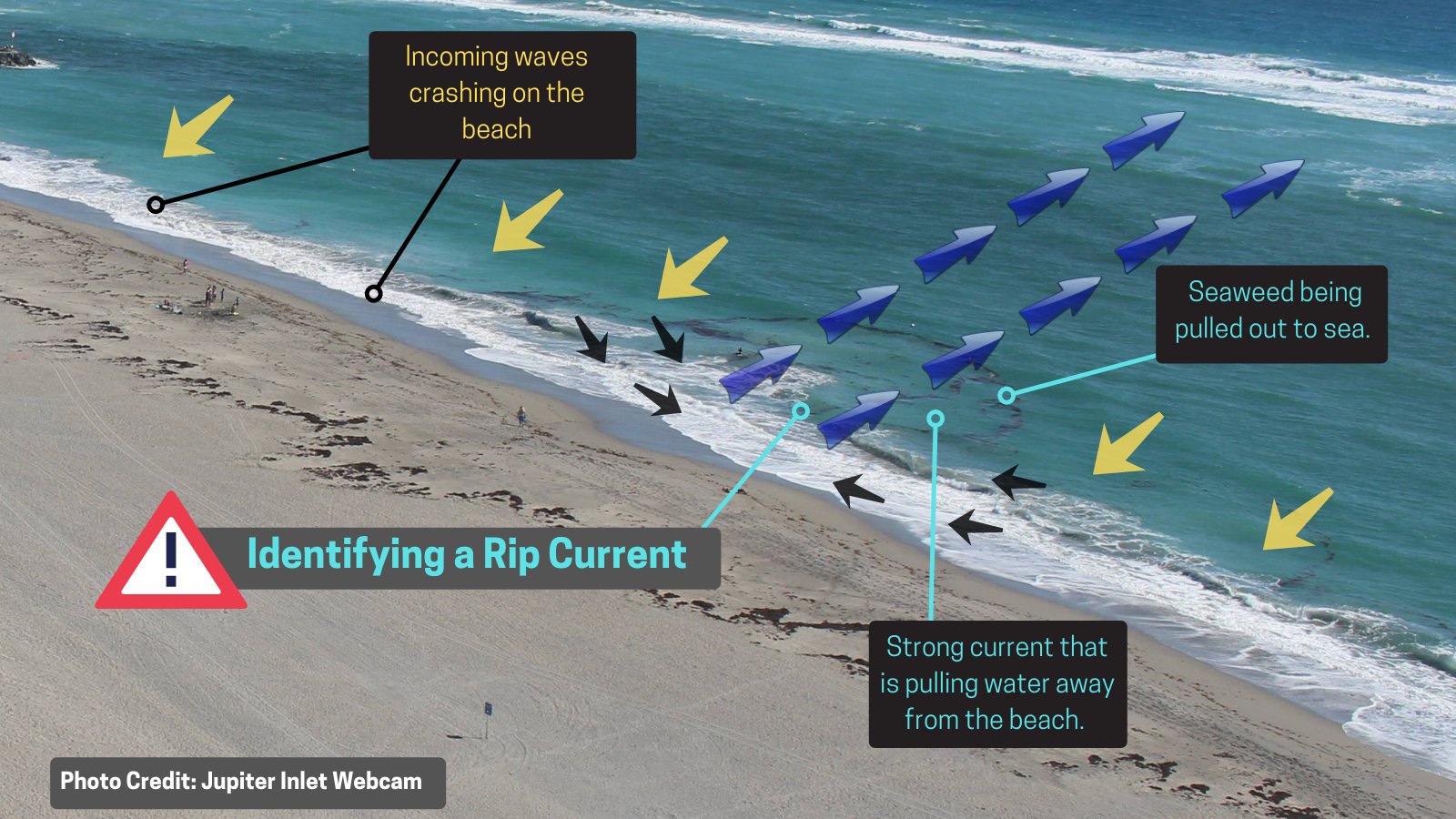It’s Almost Beach Season, So We Need To Talk About Rip Currents

The weather is getting into the summertime groove, and that means it’s time for many to hit the beach. Sun, sand, surf, or sippin’ on a beer while the kids play, who doesn’t love a beach trip? Before heading out though, take some time to think about the risk of rip currents. So far this year, before the start of summer, 14 people have been killed in rip currents around the United States and Puerto Rico. In this post I’m going to discuss what a rip current is and how to spot them, what to do if you get caught in one, and the flag warning system around the country.

Understanding and Identifying a Rip Current
What Is A Rip Current?
It is simply a narrow current of water extending from the coast out into the ocean that moves away from the coast. These occur as waves break on the coast and the water goes to move back out. It will often get funneled into channels, like between sandbars and near structures, and create an outgoing current perpendicular to the coast. They are typically narrow, at most about 80 feet wide. The danger in them is you can’t swim against this current and make progress back toward shore. People end up trying, getting tired out, and drowning because they can’t keep fighting.

Identifying A Rip Current
They aren’t always all that easy to see, but I’ve got a few tips. The first is to look for areas of darker water between the white caps of breaking waves. The next is to look for sand, seaweed, ect being moved away from the beach. I know, weird that rip currents move stuff away from the coast.
The following tips are a little less obvious. Looking for ripples in the water between areas of breaking waves. This is a good sign the water is moving away from the shore. Another is to identify parts of the beach where there has been increased erosion. Since rip currents move mass away from the coast, areas where more stuff has been removed will show common rip current locations at your beach.
Visually, NWS Miami put out a good example of what one looks like.

How To Escape A Rip Current
The most important thing to remember is don’t panic. Yes, you can’t swim against the current and get back to shore. That means, don’t swim against the current but instead swim parallel to the shore. These things are not very wide, meaning you can get out without swimming very far. The key is to not tire yourself out when caught in one. Once you escape, swim back toward shore with a little bit of an angle to keep you out of wider parts of the rip.
If you don’t think you can escape, turn toward shore and wave your arms. Also, never go out alone. Have someone on shore who can call for help if you need it. Better yet, only swim at beaches with a lifeguard on duty.

The Warning Flags

I’m pretty sure you get the idea. Double red flags mean don’t get in the water or potentially face legal consequences if the currents don’t drown you. Red flags mean the currents are dangerous and you better be a strong swimmer and know how to get out of trouble. This is the time to review the flag warnings to know what they mean. So you and your family can have a safe trip out to the coast this summer.
tl;dr version
Rip currents are the most dangerous part of going to the beach. Knowing how to spot one and how to escape if you’re caught in one can be the difference between a scary moment and something worse. Swim parallel to the shore to escape as to not fight the current. Don’t go swimming on a red flag day, or at least stay where your feet can still touch the bottom. Be safe out there this summer.
Finally, the NWS Mobile put out rip current forecasts daily for everything from Dauphin Island, AL to Destin, FL. It is always a good idea to check those before heading out to the beach.

One thought on “It’s Almost Beach Season, So We Need To Talk About Rip Currents”
Comments are closed.